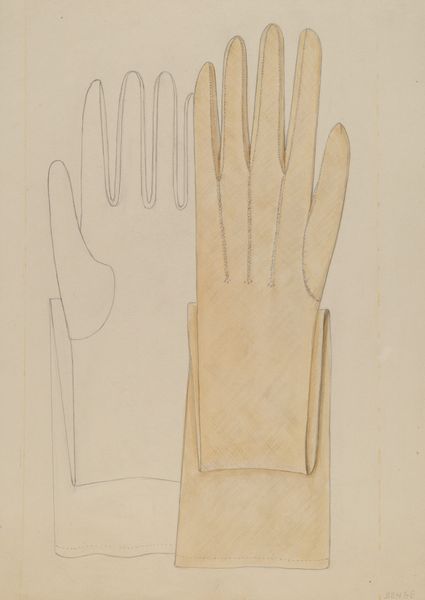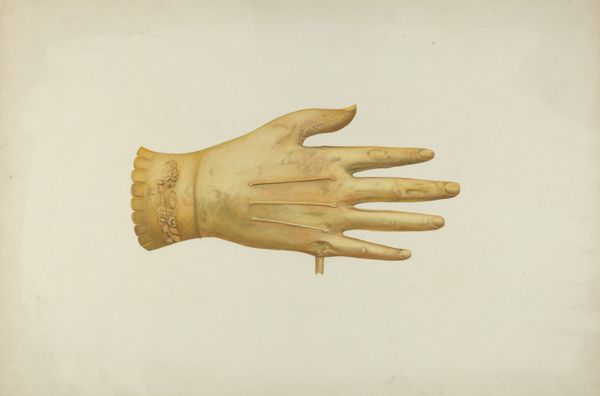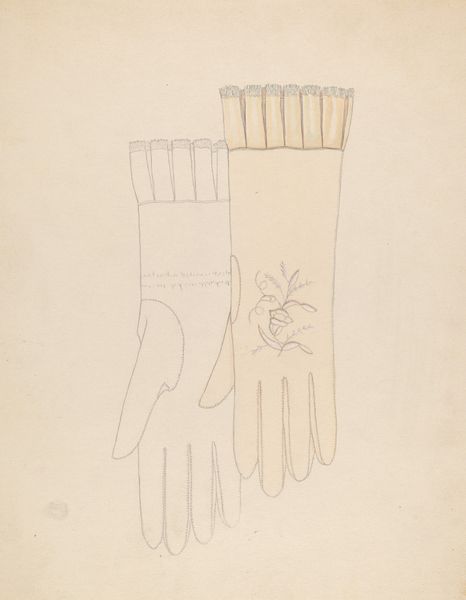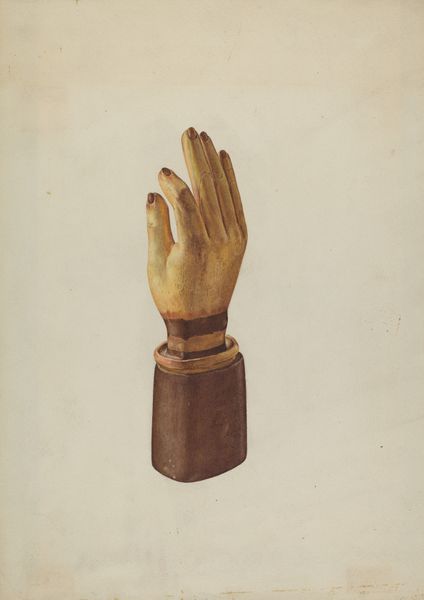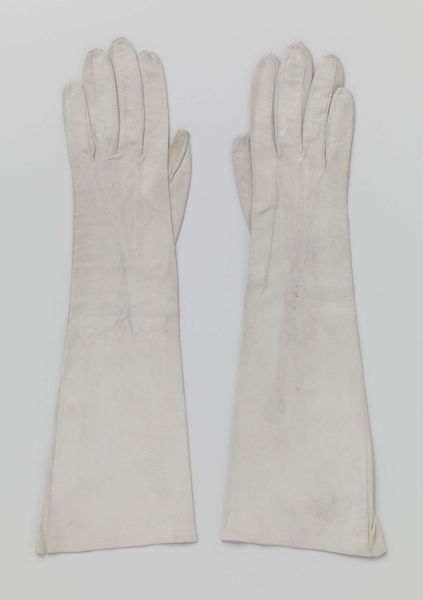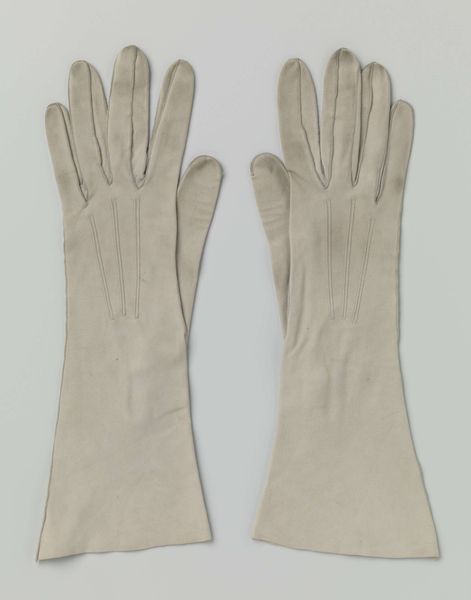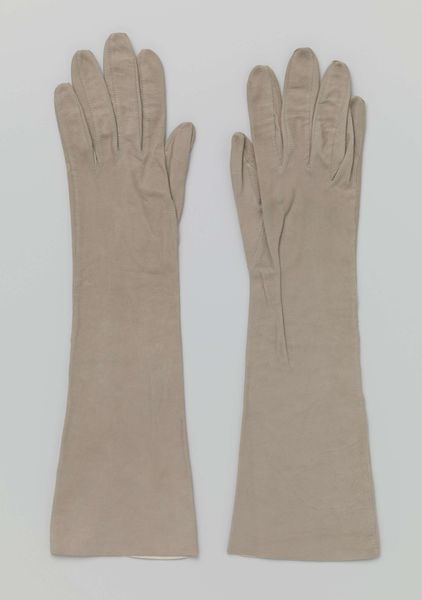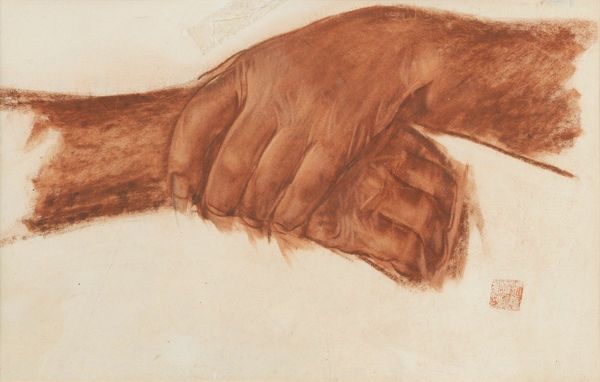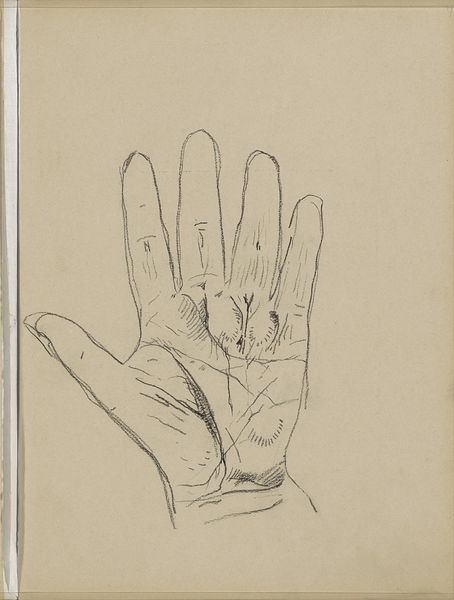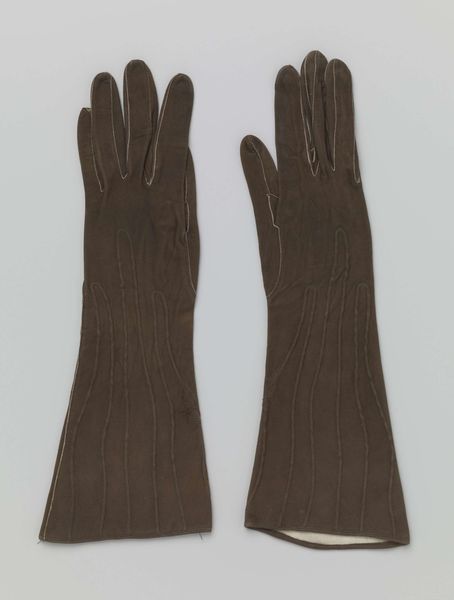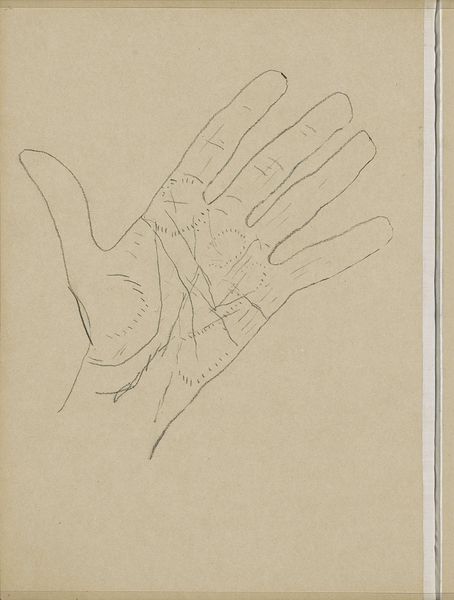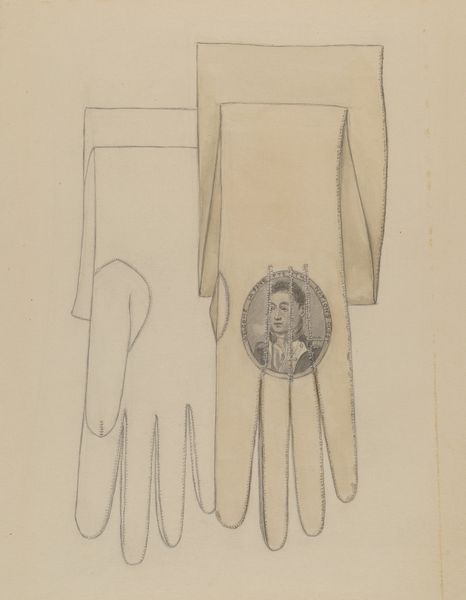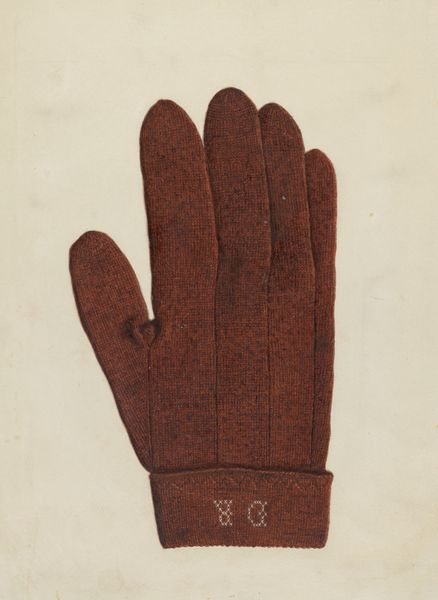
drawing, paper, pencil
#
drawing
#
paper
#
pencil
#
academic-art
Dimensions: overall: 43.3 x 34.5 cm (17 1/16 x 13 9/16 in.)
Copyright: National Gallery of Art: CC0 1.0
Curator: Looking at this work, "Man's Gloves," created around 1938 by Melita Hofmann, immediately gives me a sense of poignant stillness. I mean, aren't they elegant, almost whispering of a time gone by? Editor: It’s interesting you say that. My first impression is of absence. Disembodied hands rendered in pencil on paper. Consider the historical context – the late 1930s teetering on the edge of World War II. Gloves often symbolize propriety, concealing the hand that might perform unsavory actions, so there is more than one layer here. Curator: Absolutely, the historical period infuses this piece. They remind me a little of how people used to carefully lay out their clothes; there's care and perhaps even tenderness implied. The delicate rendering really underscores that. Editor: The act of drawing itself becomes a significant gesture. It's an academic study rendered with gentle, deliberate strokes. In some ways, they are stand-ins for something—the missing body, laboring hands perhaps—transformed by a context of looming global conflict into an artifact, maybe a symbol of impending loss. Curator: Yes, and those precise details; you almost feel like you could reach out and feel the texture of the leather. I keep thinking about what those hands might have done or held. It gives me this melancholic feel that someone loved, labored or needed protection and warmth. Editor: Precisely! What are the politics of rendering men's gloves so deliberately and dispassionately during that particular historical moment? Gloves were obviously signifiers of class but here, detached from the body, their meaning shifts. Is this an intimate portrayal or, ultimately, an impersonal archive? Curator: It feels like both, strangely. It is a beautifully objective rendering, and perhaps that distance heightens our awareness of them as signifiers of a life lived and hands working or not. I might have even wanted to wear these! It just suggests that perhaps, the meaning might lie between absence and love. Editor: A testament to the subtle ways everyday objects can hold multitudes, reflecting personal histories and broader social anxieties of class, gender and conflict. It also underscores that what’s absent from an image often speaks louder than what is rendered present.
Comments
No comments
Be the first to comment and join the conversation on the ultimate creative platform.
